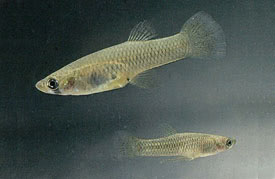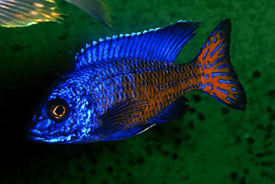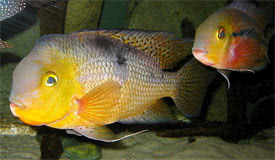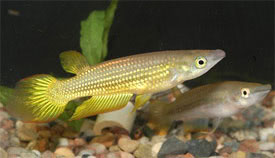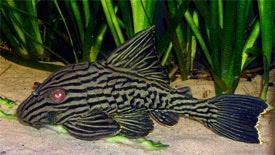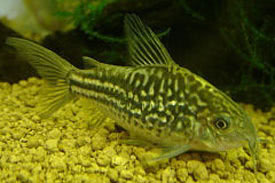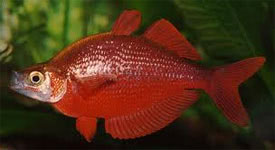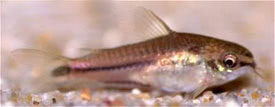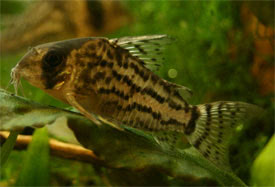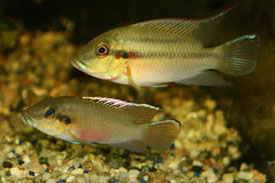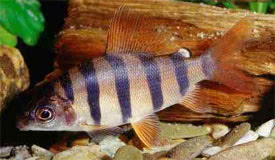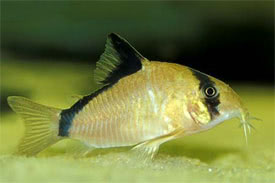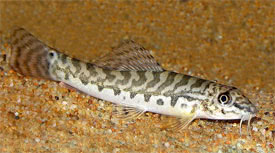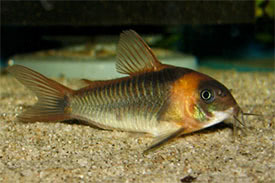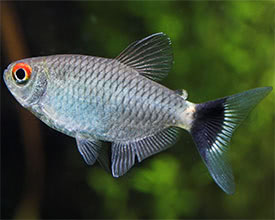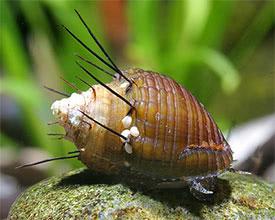
 Magyarul / Hungarian
Magyarul / Hungarian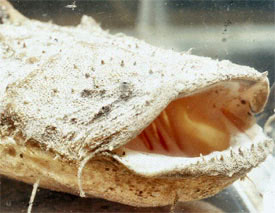
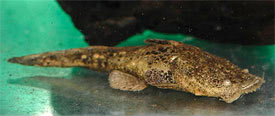
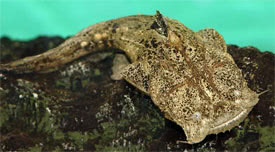
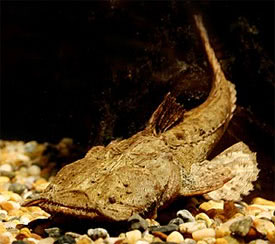
- Scientific name: Chaca chaca
- Synonyms: Platystacus chaca
- Common name: Frogmouth catfish
- Group: Catfishes
- Habitat: Asia; India, Bangladesh, Nepal
- Size: 20 cm
- Biotope: Inhabits in still or slow-moving water, usually in the leaf litter and mulm.
- Social behavior: May become a predator, and is not recommended for a community tank. They will consume almost any fish that can fit in their mouth. Best suited for a species tank, although can be combined with large fish.
- Diet: Carnivorous; after it is acclimatized the fish will take FD tablets. They eat small fish, river shrimp and earthworms or other worms.
- Breeding: Hard
- Tank: Minimum 80 litres
- Population: 1 fish for 80 litres
- Decoration: Use soft, sandy substrate as the fish often bury themselves. Dried oak or beech leaves will help to simulate their natural habitat. Use subdued lighting.
- Temperature: 22-25 °C
- pH: 6-8
- Hardness: 4-25 NK°
- Lifespan: 8-12 years
Description: An elongated species with a flattened, broad head, and a wide mouth. The eyes are located far apart, on top of the head. The body is dark brown in color, and occasionally has some lighter markings. Fins are dark brown with black blotches on them.
The name comes from the local name of the fish, which is probably derived from the sound it makes when irritated. A nocturnal species, it becomes active only when eating. May attack sleeping fishes. This species does not require much space for its size. Curiously Chaca spp. appear to lower the pH of their aquariums, much faster than the usual pH drop of a neglected tank. It is excreting the waste products away from the kidneys into the water that it must be of a very high acid content considering its diet, and thus lowering the pH. Of course this would happen only in smaller aquariums.
The feeding habits of this species has been observed in nature. The fish remains motionless on the bottom amongst leaves, and move its barbels as a worm. When the smaller fish swims toward the lure, the Frogmouth Catfish grabs the prey.
Males are longer and slimmer than females. Chaca chaca has been bred in aquaria. Spawning occurs usually in a cave or pipe. The male guards the eggs. The eggs hatch in 3 days, and the fry became free-swimming after another 7 days. Feed the fry with small live foods, such as newly hatched brineshrimp.



